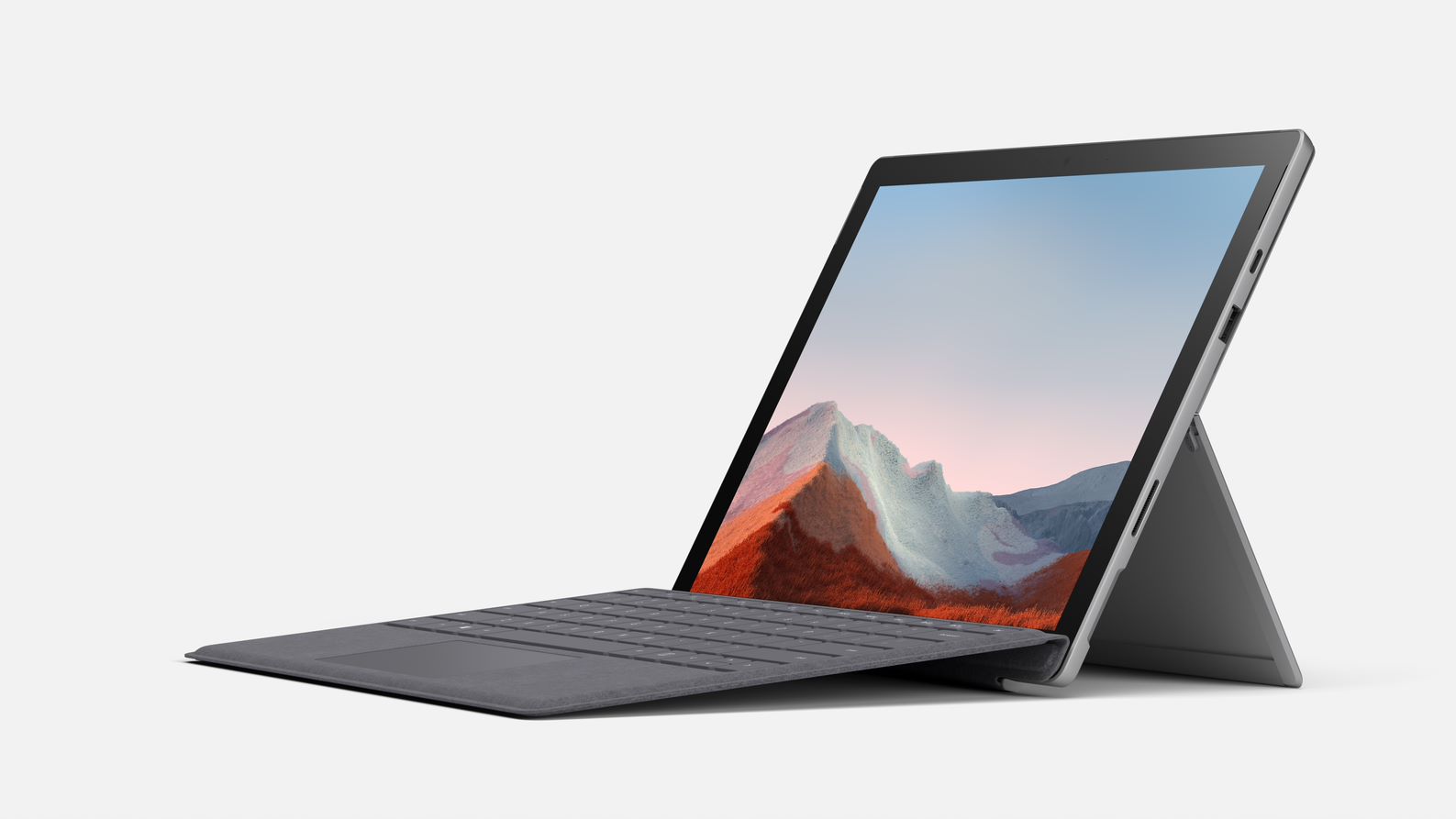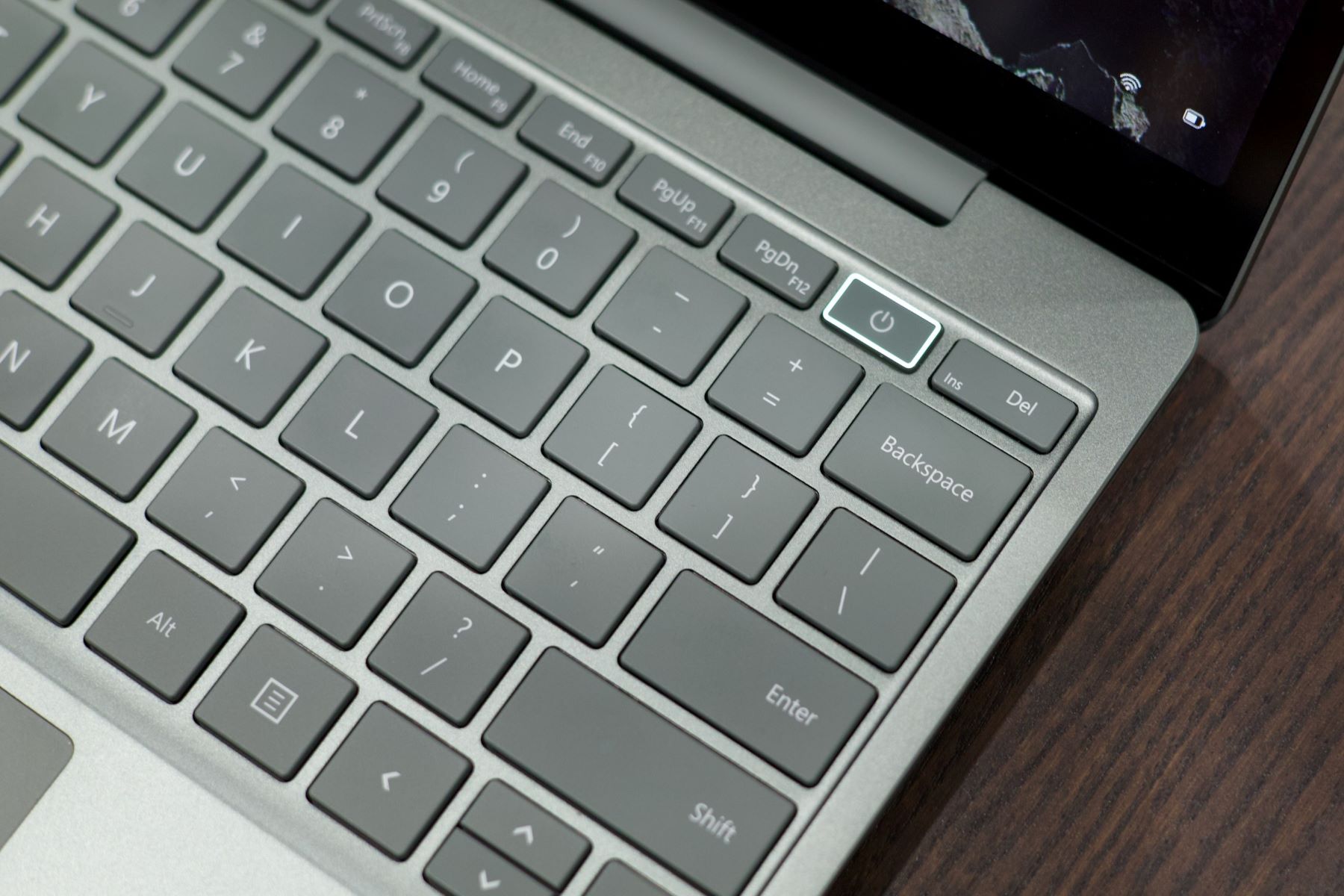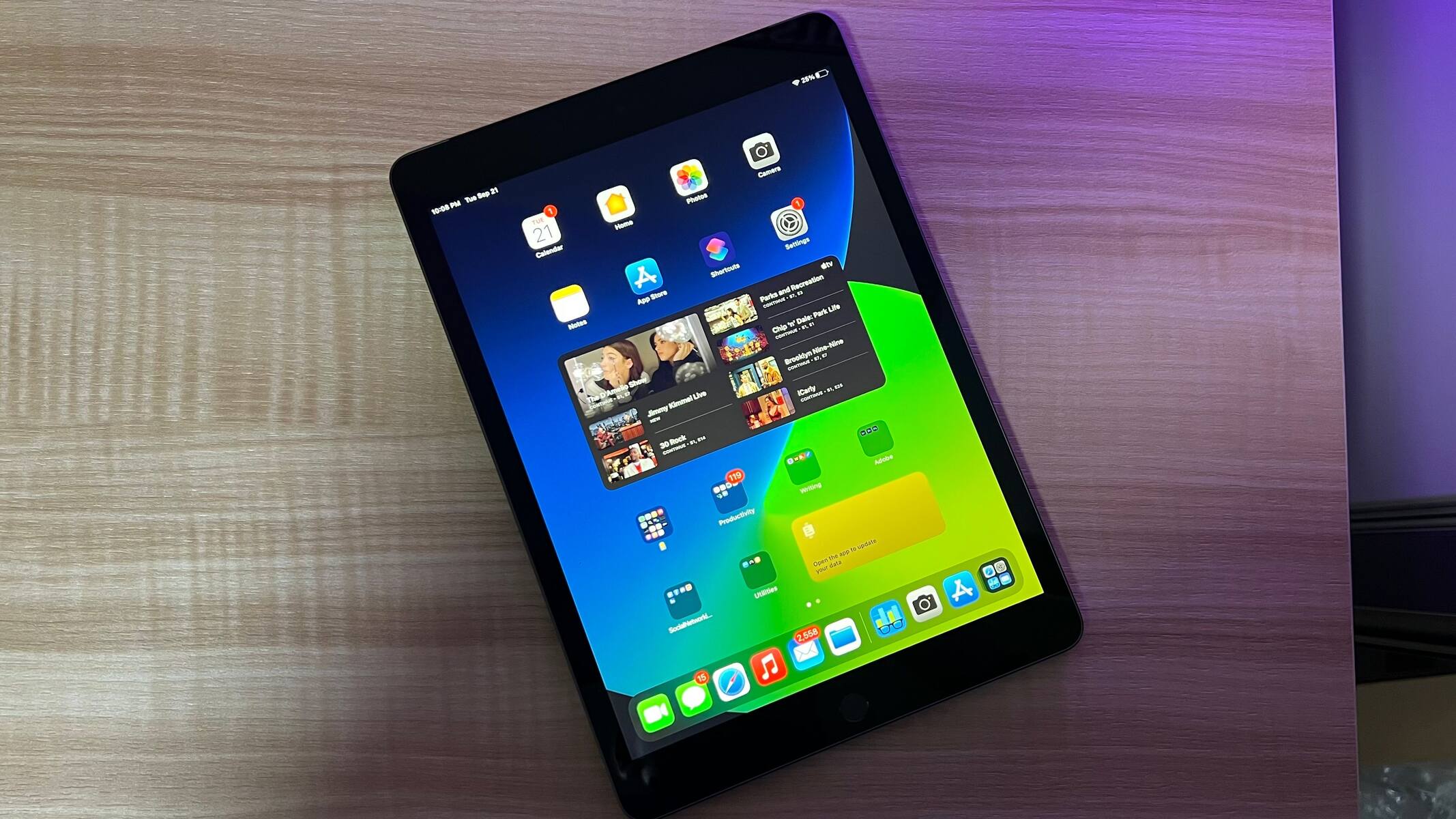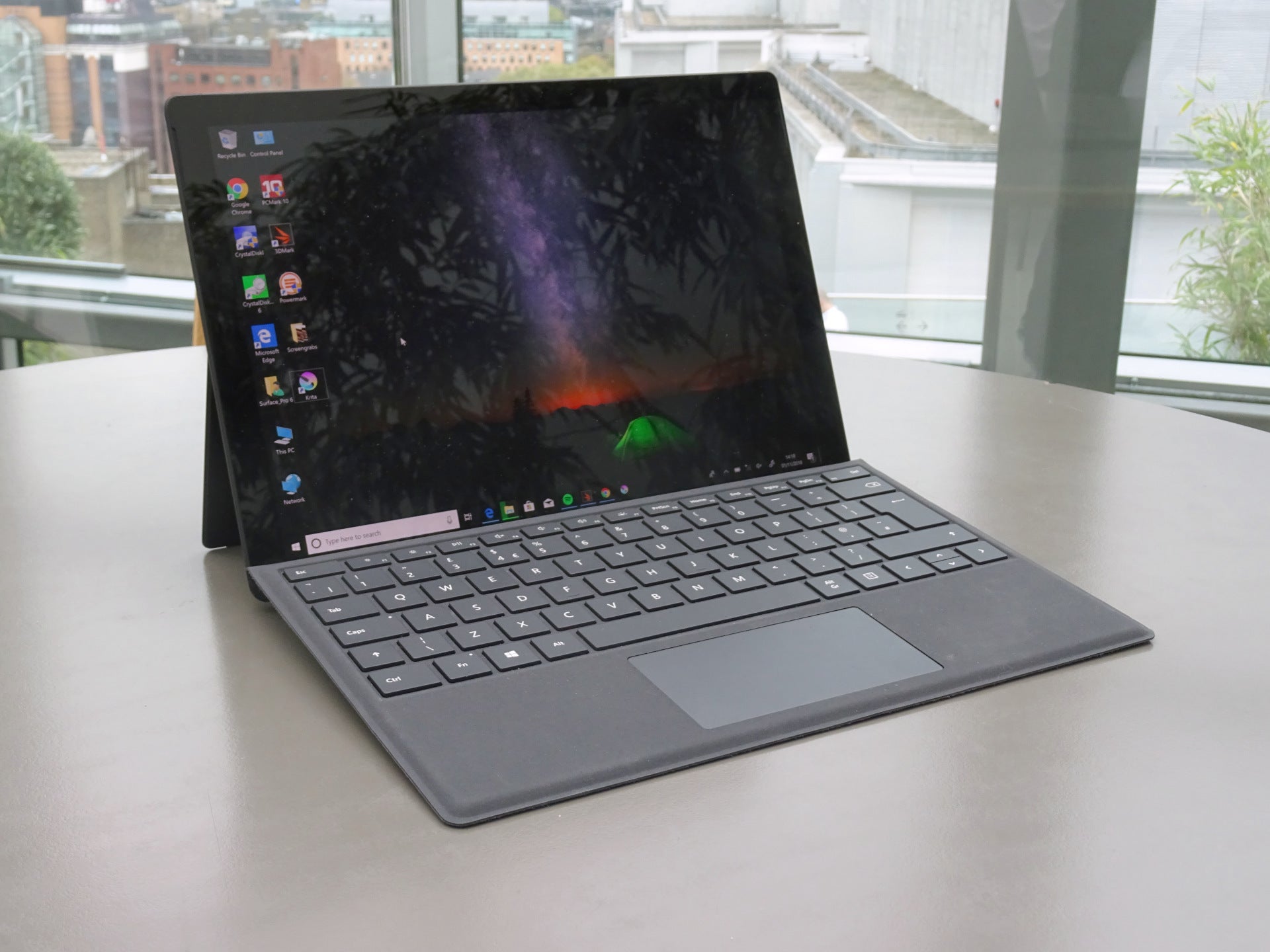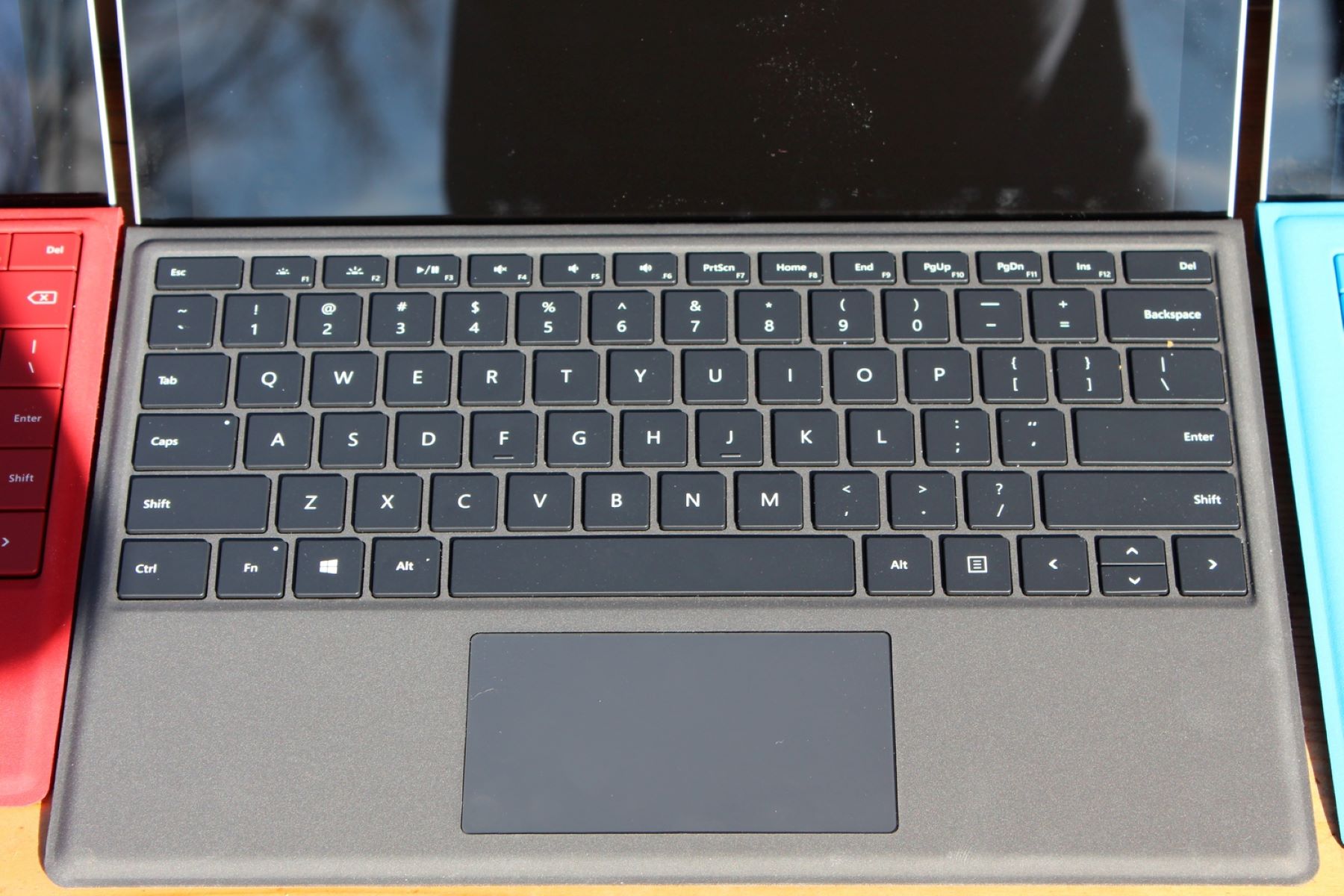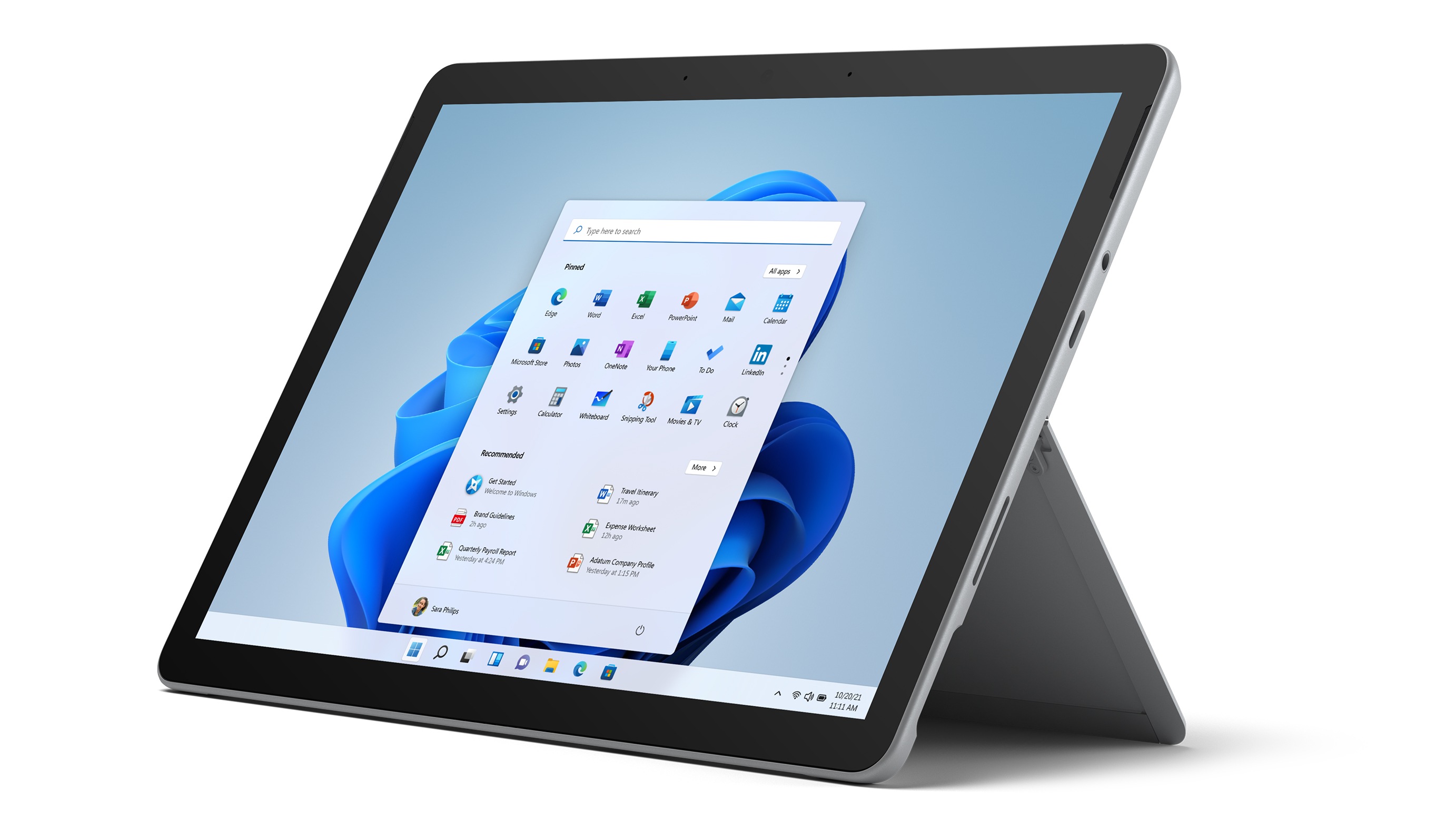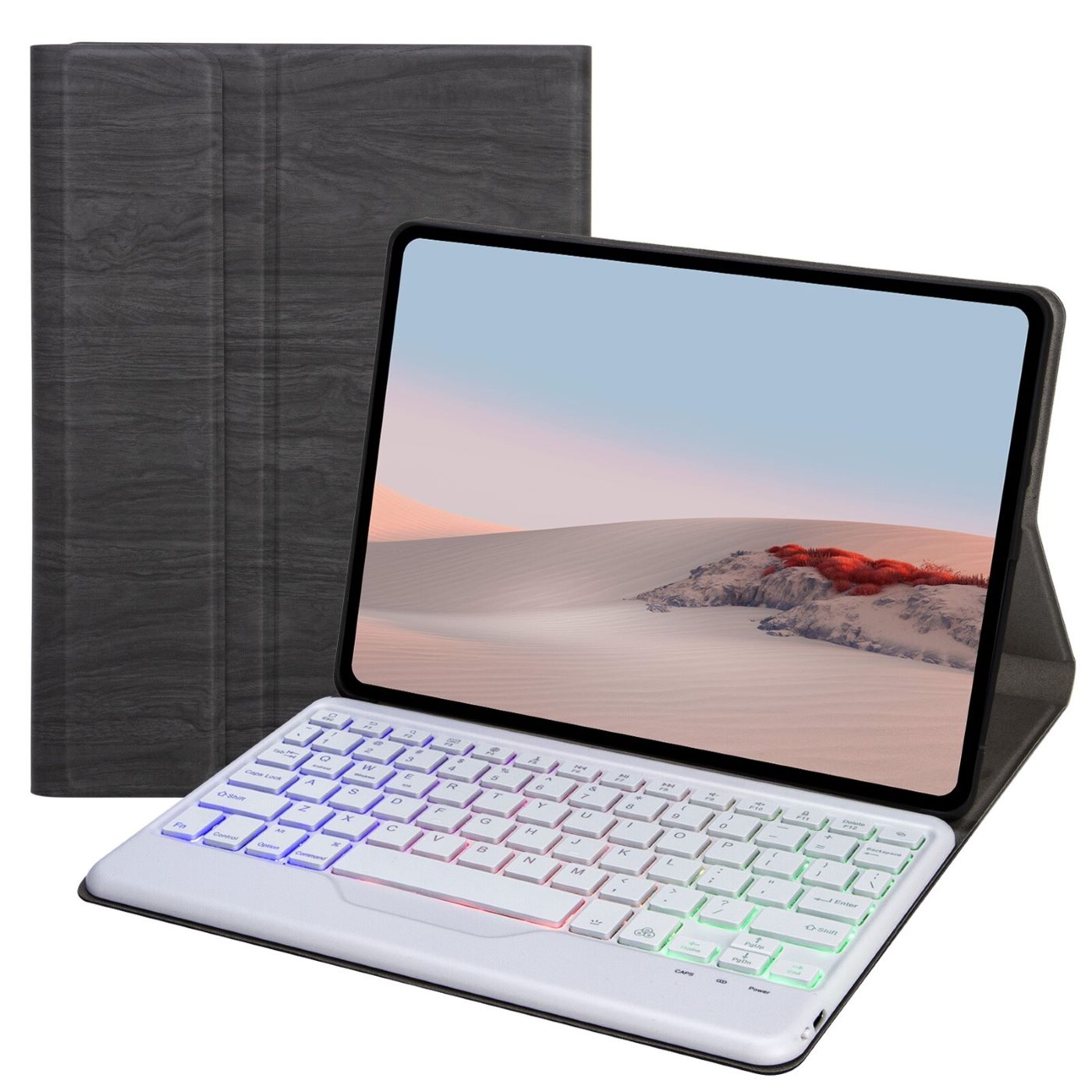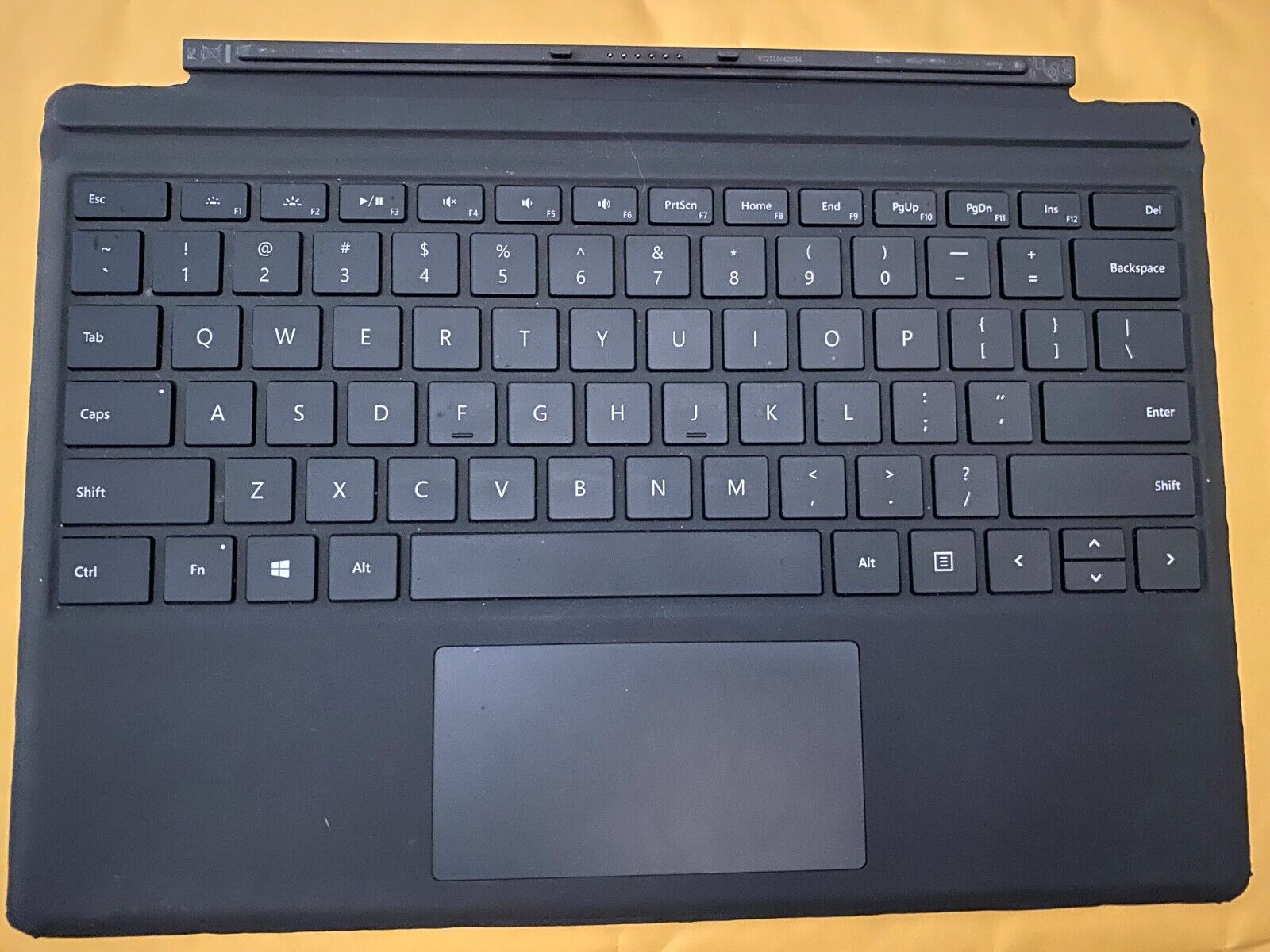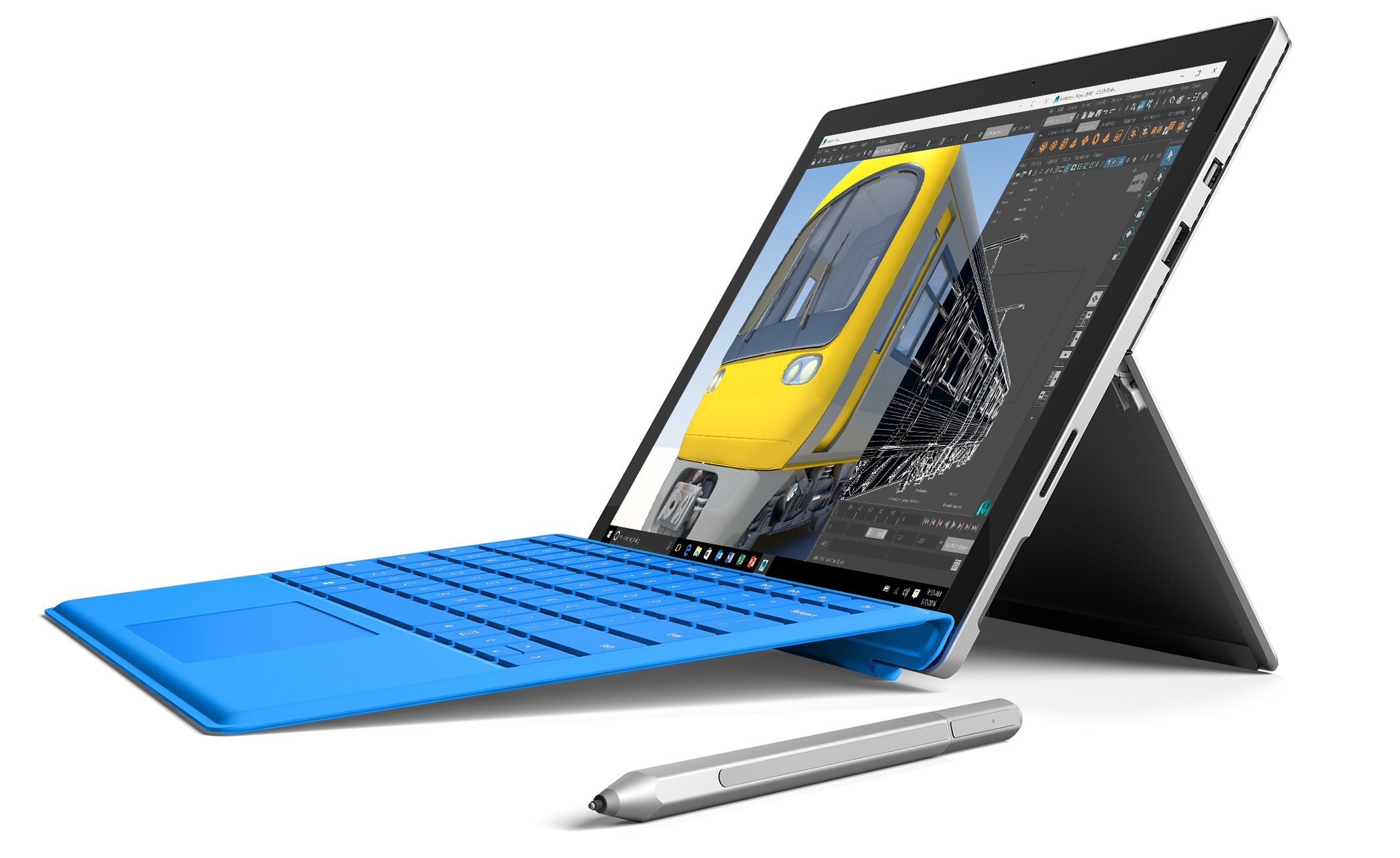Introduction
Microsoft Surface tablets have gained immense popularity in the tech world for their sleek design, powerful performance, and versatility. With two main lineups – Surface Pro and Surface Go – Microsoft offers a range of tablets to cater to different needs and budgets. In this article, we will delve into the pricing of Microsoft Surface tablets, exploring the options available and factors that influence their price points.
The Surface Pro lineup is targeted towards professionals and power users who require a high-performance device for intensive tasks. On the other hand, the Surface Go lineup offers a more affordable option for casual users and students without compromising on key features.
The price of a Microsoft Surface tablet varies depending on several factors, including the model, configuration, and optional accessories. Each lineup offers different models with various specifications, giving users the flexibility to choose the tablet that best suits their requirements and budget.
In the next sections, we will provide a detailed overview of the pricing for both the Surface Pro and Surface Go models, highlighting the available configurations and comparing them with other tablet brands in terms of price and features.
Furthermore, we will discuss the factors that impact the price of Microsoft Surface tablets, such as processor, RAM, storage capacity, display size, and additional accessories. By understanding these factors, users can make an informed decision about which Microsoft Surface tablet is the right fit for them.
So, let’s dive into the world of Microsoft Surface tablets and discover the pricing options available for these sleek and powerful devices.
Surface Pro lineup
The Surface Pro lineup is designed for professionals and power users who need a tablet that can handle demanding tasks. These tablets are equipped with high-performance components and offer a variety of features to enhance productivity.
Microsoft offers several models in the Surface Pro lineup, starting with the entry-level model and going up to the top-of-the-line variant. The price of a Surface Pro tablet varies based on the model and the specifications chosen.
The entry-level model of the Surface Pro typically comes with an Intel Core i3 processor and 4GB of RAM, which is suitable for basic tasks such as web browsing, document editing, and multimedia consumption. As for storage, it usually starts at 128GB, giving users ample space to store their files and documents. The price of this model starts around $799.
The mid-range models of the Surface Pro lineup feature more powerful processors, such as the Intel Core i5 or i7, and offer a higher RAM capacity, ranging from 8GB to 16GB. These tablets are ideal for users who need to handle more demanding tasks, such as graphic design, video editing, and multitasking. The price of the mid-range Surface Pro tablets typically starts around $999.
For users looking for the ultimate performance, the top-of-the-line models of the Surface Pro lineup offer the most advanced specifications. These tablets boast the latest Intel Core i7 processors, up to 32GB of RAM, and larger storage capacities, reaching up to 1TB. They are perfect for professionals in fields such as architecture, engineering, and 3D modeling. However, the premium features come at a higher price, with the top-of-the-line Surface Pro tablets costing upwards of $2,000.
In addition to the base configurations, Microsoft also offers optional accessories, such as the Surface Pen and Type Cover, which can further enhance the functionality and productivity of the Surface Pro tablets. These accessories come at an additional cost and can be customized based on the user’s preferences.
The Surface Pro lineup offers a range of models and configurations to cater to diverse needs, ensuring that users can find a tablet that fits their requirements and budget. Whether you’re a professional working on demanding tasks or a student seeking a versatile device for studying and entertainment, the Surface Pro tablets provide a powerful and flexible solution.
Surface Go lineup
The Surface Go lineup offers a more affordable option for users who are looking for a compact and portable tablet. These tablets are lightweight and compact, making them ideal for students, frequent travelers, and casual users.
Microsoft offers two main models in the Surface Go lineup – the base model and the higher-end variant. The price of a Surface Go tablet depends on the chosen configuration and optional accessories.
The base model of the Surface Go features an Intel Pentium Gold processor, 4GB of RAM, and 64GB of storage. This configuration is suitable for light tasks like web browsing, email, document editing, and media consumption. The price for the base model starts around $399.
The higher-end variant of the Surface Go comes with a more powerful Intel Pentium Gold processor, 8GB of RAM, and increased storage capacity, usually starting at 128GB. This configuration is better suited for multitasking and running slightly more demanding applications. The price for the higher-end variant starts around $549.
In addition to the base configurations, users can choose to accessorize the Surface Go tablet with optional accessories like the Surface Pen and the Type Cover. These accessories can be useful for taking notes, drawing, and enhancing the productivity of the tablet. However, they come at an additional cost.
The Surface Go lineup provides an affordable option for users who prioritize portability and affordability. With its compact size and lightweight design, the Surface Go tablets are perfect for students who need a device for note-taking and studying, as well as for individuals who require a portable tablet for basic tasks while on the go.
Although the Surface Go tablets may not offer the same level of performance as the Surface Pro models, they provide a cost-effective solution for users who prioritize mobility and convenience. Whether you’re a student, a frequent traveler, or a casual user, the Surface Go lineup offers a compact and versatile tablet that meets your needs without breaking the bank.
Pricing for Surface Pro models
The pricing for the Surface Pro models varies depending on the chosen configuration and optional accessories. Microsoft offers a range of options to cater to different budgets and needs.
Starting with the entry-level model, the price for the base configuration of the Surface Pro typically begins around $799. This includes an Intel Core i3 processor, 4GB of RAM, and 128GB of storage. While this configuration is suitable for basic tasks, users who require more power and storage capacity may opt for higher-end models.
The mid-range models of the Surface Pro lineup start at around $999 and offer improved performance and capabilities. These models commonly feature an Intel Core i5 or i7 processor, 8GB to 16GB of RAM, and storage options ranging from 128GB to 512GB. With these specifications, users can handle more demanding tasks such as graphic design, video editing, and multitasking.
For users who need top-level performance, the Surface Pro tablets offer configurations with the latest Intel Core i7 processors, up to 32GB of RAM, and storage capacities up to 1TB. These high-end models are designed for professionals in fields such as architecture, engineering, and 3D modeling. However, the premium features come with a higher price tag starting at $2,000 or more.
It is important to note that the Surface Pro tablets can be further customized with optional accessories. The Surface Pen, which allows for precise drawing and note-taking, usually costs around $99. The Type Cover, which acts as both a protective cover and a keyboard, is priced at approximately $129. These accessories can be included in the overall pricing or purchased separately to enhance functionality based on individual preferences.
Overall, the pricing for the Surface Pro models reflects the advanced technology and performance they offer. Users have the flexibility to choose the configuration that meets their specific requirements and aligns with their budget. Whether you are a professional in need of powerful productivity tools or a creative individual seeking a device for content creation, the Surface Pro models provide options to suit a range of budgets and needs.
Pricing for Surface Go models
The Surface Go models offer a more affordable option compared to the Surface Pro lineup, catering to users who prioritize portability and budget-friendly options. Microsoft provides different configurations for the Surface Go tablets, with varying price points.
The base model of the Surface Go typically starts at around $399. This entry-level configuration includes an Intel Pentium Gold processor, 4GB of RAM, and 64GB of storage. While this configuration is suitable for basic tasks such as web browsing, email, and document editing, users who require more power and storage may opt for higher-end models.
The higher-end variant of the Surface Go starts at approximately $549. This configuration offers an Intel Pentium Gold processor, 8GB of RAM, and storage options starting at 128GB. With increased memory capacity and storage, users can enjoy smoother multitasking and have more space for their files and applications.
It’s worth noting that the pricing for the Surface Go tablets does not include optional accessories like the Surface Pen and Type Cover. These accessories can be purchased separately to enhance productivity and functionality. The Surface Pen is priced at around $99, providing users with the ability to take notes, draw, and interact with the tablet in a precise and intuitive way. The Type Cover, which acts as both a protective cover and a keyboard, is priced at approximately $129, converting the Surface Go into a laptop-like device.
The Surface Go models offer an affordable option for students, casual users, and frequent travelers who prioritize portability and budget-friendly pricing. While they may not offer the same level of performance as the Surface Pro models, they provide a compact and versatile tablet that can handle day-to-day tasks efficiently.
Whether you’re a student looking for a device for note-taking and studying or a casual user in need of a portable tablet, the Surface Go models offer a cost-effective solution. With their lightweight design, solid performance, and attractive price points, the Surface Go tablets make computing on the go more accessible and convenient.
Available configurations and their prices
Microsoft offers a range of configurations for both the Surface Pro and Surface Go models, allowing users to choose the specifications that best suit their needs and budget.
For the Surface Pro lineup, the available configurations include different processor options, RAM capacities, and storage sizes. The entry-level configuration typically starts at $799, featuring an Intel Core i3 processor, 4GB of RAM, and 128GB of storage. As users move up to the mid-range and high-end configurations, the prices increase accordingly, ranging from $999 to $2,000 or more, depending on the chosen specifications.
As for the Surface Go models, users can select from base and higher-end variants. The base model, starting at around $399, offers an Intel Pentium Gold processor, 4GB of RAM, and 64GB of storage. The higher-end variant begins at approximately $549, featuring an Intel Pentium Gold processor, 8GB of RAM, and storage options starting at 128GB.
It is also important to consider optional accessories when choosing a configuration. The Surface Pen, which is priced at approximately $99, enhances the tablet’s functionality by allowing users to take notes, draw, and interact with the screen more precisely. The Type Cover, available for approximately $129, adds a keyboard and transforms the tablet into a laptop-like device.
By offering a variety of configurations and optional accessories, Microsoft ensures that users have the flexibility to customize their Surface tablets according to their specific preferences and requirements.
The availability of different configurations and price points allows users to find the perfect balance between performance, storage capacity, and budget. Whether users need a tablet for basic tasks, professional work, or creative endeavors, the Surface Pro and Surface Go lineups have options to accommodate various needs and budgets.
It is advisable for users to carefully evaluate their requirements and budget constraints before selecting the configuration that best suits their needs. Considering factors such as processing power, RAM, storage capacity, and additional accessories will help users make an informed decision and maximize the value they get from their Surface tablet.
Comparing the prices with other tablet brands
When considering the price of Microsoft Surface tablets, it’s essential to compare them to other tablet brands on the market. By doing so, users can evaluate the value proposition and determine whether Microsoft offers competitive pricing for its devices.
When comparing the prices of Surface Pro tablets with other high-end tablet brands such as Apple’s iPad Pro or Samsung’s Galaxy Tab S7, Microsoft’s pricing falls within a similar range. The Surface Pro models offer comparable performance and functionality to these competitors, making them a viable option for users seeking a high-end tablet experience. However, it’s important to note that pricing may vary depending on the specific configurations and optional accessories chosen.
For users looking for a more budget-friendly option, the Surface Go tablets compete with other affordable tablet brands such as Apple’s iPad (8th generation) or Samsung’s Galaxy Tab A7. Microsoft’s pricing for the Surface Go models aligns with these competitors, providing users with a cost-effective option without compromising on essential features.
One advantage of Microsoft Surface tablets is their versatility and compatibility with Windows operating systems. This feature sets them apart from other tablet brands that primarily use mobile operating systems. The ability to run full desktop applications on the Surface tablets adds value for users who require the flexibility and functionality of a traditional computer within a tablet form factor.
Additionally, Microsoft’s integration with other products and services within their ecosystem, such as Microsoft Office and cloud storage through OneDrive, can further enhance the overall value proposition of Surface tablets for users invested in the Microsoft ecosystem.
While price is an important consideration, it is equally crucial to factor in the overall quality, performance, and features offered by a tablet brand. Microsoft Surface tablets have gained a reputation for their premium build quality, exceptional stylus capabilities with the Surface Pen, and the innovative detachable Type Cover keyboard. These features contribute to an enhanced user experience and justify the pricing of the Surface tablets.
Ultimately, users should carefully evaluate their specific needs, preferences, and budget when comparing the prices of Microsoft Surface tablets with other tablet brands. Considering factors such as performance, software compatibility, additional features, and the overall ecosystem experience will allow users to make an informed decision and select the tablet that best suits their requirements.
Factors impacting the price of Microsoft Surface tablets
The price of Microsoft Surface tablets is influenced by various factors that contribute to their performance, features, and overall value proposition. Understanding these factors can help users make an informed decision about which Surface tablet is the right fit for their needs and budget.
1. Processor and performance: The choice of processor significantly affects the price of a Surface tablet. Higher-end models with more powerful processors, such as Intel Core i5 or i7, tend to have a higher price point compared to entry-level configurations with Intel Core i3 or Pentium processors. The processor plays a vital role in determining the tablet’s overall performance and capability to handle demanding tasks.
2. RAM capacity: The amount of RAM (Random Access Memory) affects the tablet’s multitasking ability and overall responsiveness. Surface tablets with higher RAM capacities, such as 8GB or 16GB, typically come at a higher price compared to models with lower RAM configurations. Users who plan to use resource-intensive applications or multitask extensively may opt for higher RAM capacities, which can impact the overall cost.
3. Storage capacity: The amount of onboard storage available on a Surface tablet can vary, ranging from 64GB to 1TB or more. Models with larger storage capacities are generally priced higher. Users who require ample space for storing files, documents, and applications may need to consider a higher storage configuration, which can lead to an increase in the tablet’s price point.
4. Display size and resolution: Surface tablets come in various display sizes and resolutions, with larger and higher-resolution displays often commanding a higher price. Users who prioritize a larger viewing area or require a higher pixel density for tasks such as graphic design or media consumption may opt for tablets with larger and higher-resolution displays, which can impact the overall cost.
5. Additional accessories: Optional accessories such as the Surface Pen and Type Cover can enhance the functionality and productivity of Surface tablets but come at an additional cost. Users who require features like precise pen input or a physical keyboard to mimic a laptop-like experience should factor in the cost of these accessories when considering the overall price of the tablet.
6. Build quality and design: Microsoft Surface tablets are known for their premium build quality and sleek design. The use of high-quality materials, such as magnesium alloy, and attention to detail in construction contribute to the tablet’s durability and aesthetics. Tablets with superior build quality and design may have a higher price tag compared to those with more basic construction.
7. Brand reputation and ecosystem: Microsoft is a well-established brand in the technology industry, known for its software and productivity tools. The integration of Surface tablets with the broader Microsoft ecosystem, including access to services like Microsoft Office, can add value for users invested in the Microsoft ecosystem. The brand reputation and overall ecosystem experience are factors that may influence the price of Surface tablets.
By considering these various factors, users can determine the right balance between performance, features, and price when selecting a Microsoft Surface tablet. It is important to assess individual needs and prioritize the factors that are most crucial for an optimal user experience.
Conclusion
The pricing of Microsoft Surface tablets is influenced by various factors, including the chosen configuration, processor, RAM capacity, storage size, display resolution, optional accessories, build quality, and brand reputation. Microsoft offers a range of models and configurations in both the Surface Pro and Surface Go lineups, catering to different needs and budgets.
The Surface Pro tablets target professionals and power users who require high-performance devices. With a range of models starting from the entry-level configuration to the top-of-the-line variant, the Surface Pro lineup offers versatility and power. The pricing of the Surface Pro tablets reflects the advanced technology and performance they provide, making them competitive with other high-end tablet brands.
On the other hand, the Surface Go tablets offer a more affordable option for students, casual users, and travelers. Despite their lower price point, the Surface Go lineup provides adequate performance and functionality for everyday tasks, making them comparable to other budget tablet brands.
When comparing the prices of Microsoft Surface tablets with other tablet brands, it is important to consider the overall value proposition, including performance, features, compatibility with software platforms, and ecosystem integration. Microsoft’s commitment to quality build materials and attention to detail contribute to the overall user experience, justifying the pricing of Surface tablets.
Ultimately, users should evaluate their specific needs, preferences, and budget constraints when selecting a Microsoft Surface tablet. Considering factors such as processor, RAM, storage capacity, display size, and optional accessories will help users make an informed decision and find the tablet that best suits their requirements.
Whether users choose the Surface Pro or Surface Go lineup, Microsoft Surface tablets offer a combination of power, versatility, and mobility. With their sleek design, solid performance, and a wide range of configurations, Microsoft Surface tablets provide users with a reliable and productive computing experience.







